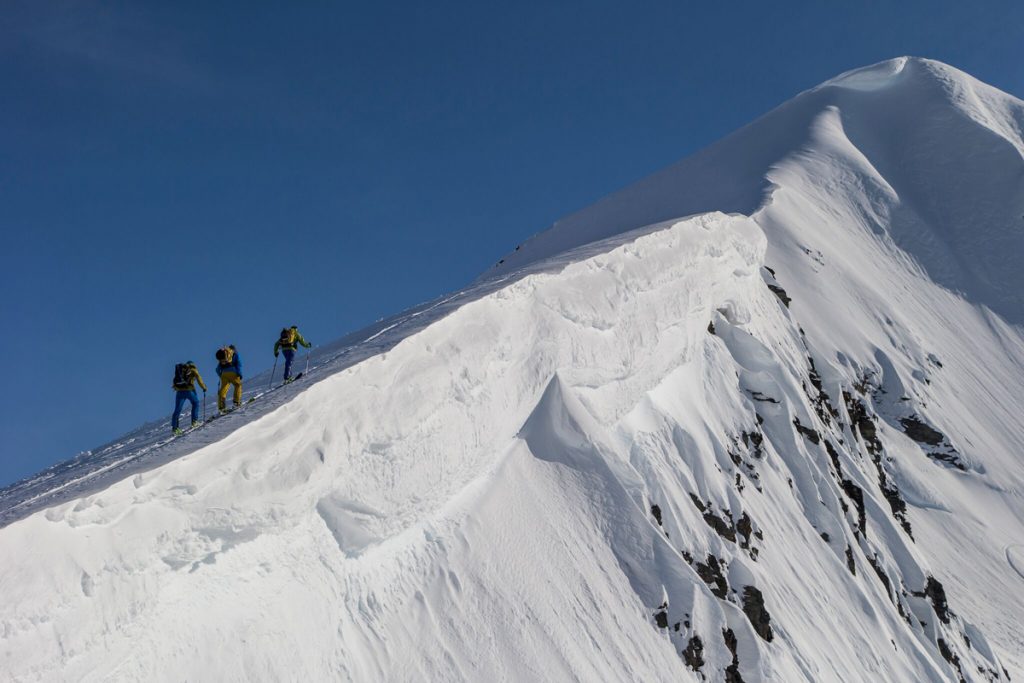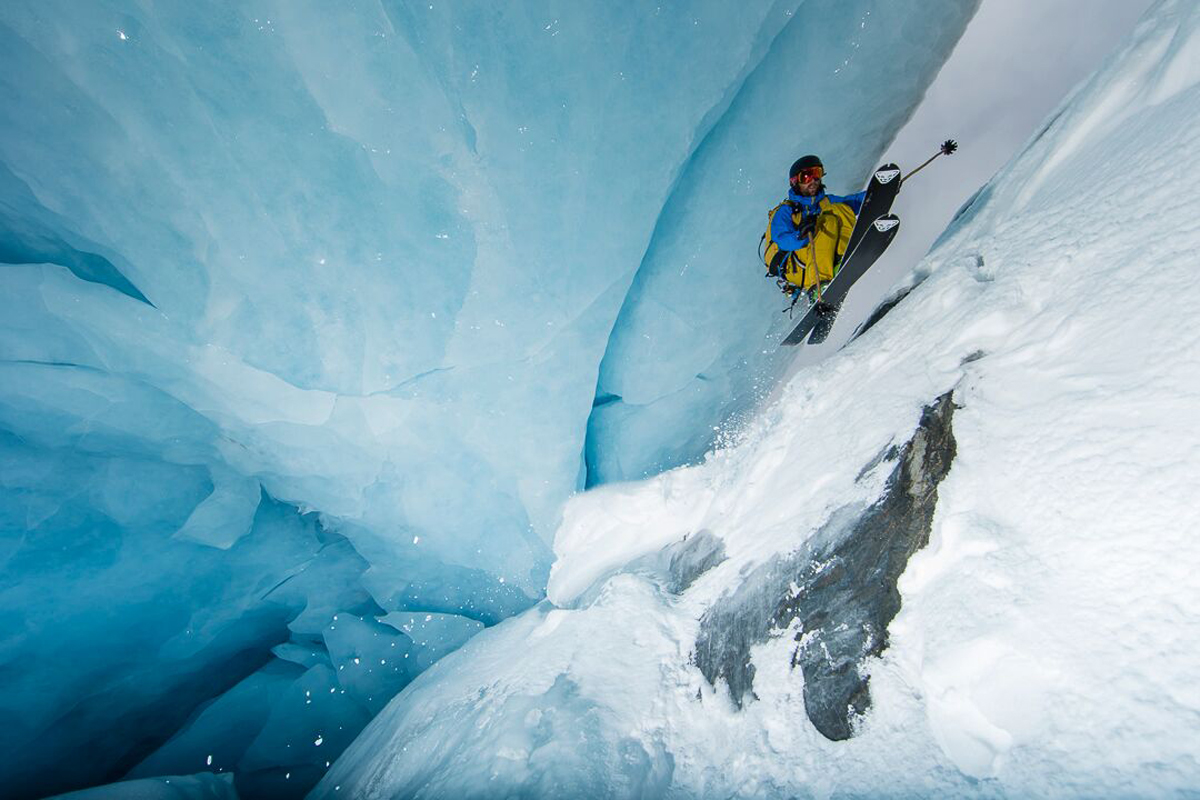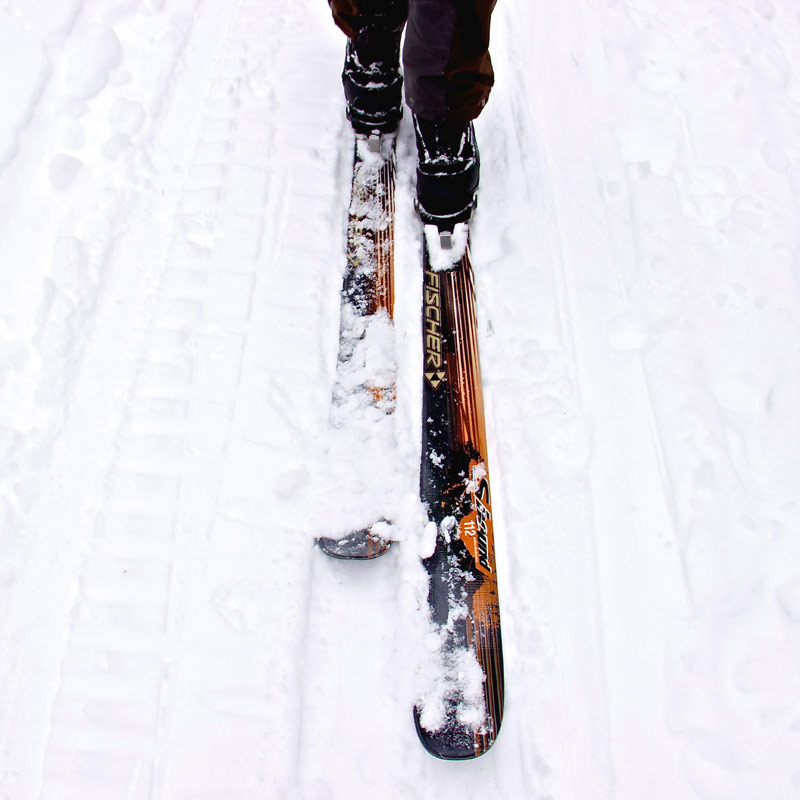Ski Uphill With Dynafit
We speak with the brand about the snow sport, product innovation and benefitting from laziness

Skiing uphill isn’t new, but has been increasing in popularity over the last few decades, becoming a favorite discipline for many skiers. Ski-mountaineering, which refers to the sport of skinning (skiing uphill with adhesive backed fabric on skis) and climbing uphill only to descend on skis, has sub-categories—alpine touring, backcountry skiing, Randonee and SkiMo racing. (The latter has been added to the 2018 Olympics.) All these styles use bindings that allow the skier’s heel to be free on the ascent and fixed on the descent. Some of the most revolutionary bindings have been those made by Dynafit, the most prolific brand in the in the world of ski-mountaineering. Dynafit was born out of the Austrian shoe brand Humanic, who made downhill boots worn by Olympic medalists in the ’70s and ’80s (earning the brand the Austrian coat of arms).
Laziness drives innovation to make life easier, for the better or the worse
Then along came Fritz Barthel, a skier, climber and designer who invented the “low-tech” binding out of laziness over 30 years ago. As the story goes, the artful Barthel almost failed to reach the summit of Mont Blanc due to his heavy skis, bindings and boots. Exhausted and annoyed he went back home and rather than train harder, he invented the low-tech. “More training! Not so appealing,” Barthel tells us. “Better make the gear lighter. Laziness, not among the most praised virtues, I know, probably the least appreciated and most denounced male virtue. On the other hand, one should not underestimate its power. It drives innovation to make life easier, for the better or the worse.”

Unlike traditional downhill bindings, tech-bindings have pins on the toe fittings that fit with special boots that have pinholes. The heel is free, allowing the skier to lift up until the skier locks into the posts on the back of the boot. Thanks to Barthel’s self-proclaimed laziness, skiers now ironically take the hard way up—by skiing uphill. We asked Barthel what he thought of this paradox. “What is skiing? Left, right, left, right, left, right, and so on… Perfectly groomed slopes? Artifacts of our industrial civilization everywhere—stations, lights, signs saying ‘Do this’ and ‘Don’t do that.’ Maybe not enough challenge anymore” he shrugs. “Ski touring has gained huge momentum by the young, fresh, anarchistic influence of a new generation. Maybe some people find it more satisfying both mentally and physically to have a more ‘complete’ sensation of snow, weather, environment or even friendship.” Barthel no longer works for Dynafit full-time, but he continues to consult and his legacy lives on with the insatiable innovations of the company.

Since Barthel’s first low-tech contributions, Dynafit has offered an array of bindings that have gotten lighter, and more beefy in durability—providing more performance for the skier. As well as chatting with Barthel, we also spoke with Dynafit’s product manager Michael Zimmerman and test manager Matthieu Fritsch to talk
about the intimidating three-to-four-year process of creating new bindings from the first sketch to official presentation.

Dynafit launched their Center of Excellence two years ago and invested heavily in machinery. The result is that “all prototyping development in-house is fast and efficient with all processes,” Zimmerman says. “We work with our own CNC milling machine, molding-cutters and tensile testing machines to work on continuous and permanent testing and high-stress, load-endurance tests.” Everything is done in-house. Real-life testing isn’t easy, and Zimmerman says the most difficult part is often finding enough snow at the right time. “That’s the thing,” he says, “To cover all variable conditions, situations, temperatures, climate which can happen during ski touring and to imitate all extremities of ascent and descent. Second thing: do the same with long-term testing having appropriate condition all year ’round.”

For years, the brand really only catered to the professionals. “It’s true, our claim ‘from athletes for athletes’ is not only a saying, because every development and new product is adjusted with athletes,” Zimmerman says. “New products and innovations come from their feedback and needs, but also very important is our dealer feedback—our market.” Fritsch adds, “The ski touring population is changing, and so are the market expectations. This is where we must be cautious, we have more and more customers who may not have as much technical knowledge and capacity as even five to 10 years ago. Athlete feedback is highly valuable on the fundamental part of a development, but the mainstream customer feedback is the key to creating easy-to-use products, where one doesn’t need half an hour to figure out how to use his product, especially if only on his skis for 10 days a winter.”

This way of thinking, designing and planning directly relates to the future of ski-mountaineering. The sport is growing: groomed resorts that are now allowing uphill traffic (including Aspen Ski Co and Crested Butte) make brands like Dynafit recognized on the slopes, not just off-piste. “While on-piste touring is not allowed everywhere, the segment is developing,” Zimmerman says. “We will launch a full on-piste touring set-up for winter 17/18 with our so-called Speedfit collection. The head-to-toe set-up contains ski, boot, binding, backpack and apparel styles—all developed for ambitious and fast ski touring, fitness-tourers, on-slope condition, after-work touring—those who focus on training.” In other words, not lazy people.
Images courtesy of Dynafit












